Steaks are incredibly luscious, but there is a lot to learn. This is a complete guide that introduces 20 steak cuts. After reading this, you will be fully knowledgeable and able to choose the best steak cuts for yourself. Let’s dive in!
(Make good use of the ↓ table of content ↓ in this long article)
Table of Contents
Steak Cuts Ranking in Different Aspects
◈ Most Tender Steak Cuts
2. Flat Iron / Teres Major / Hanger Steak
► Read More: 5 Most Tender Steak Cuts Ranked and How to Cook
◈ Toughest Beef Cuts
★ Shank
2. Round
3. Brisket / Flank Steak
◈ Best Marbled Steak Cuts
2. Ribeye Steak
3. Prime Rib / Tomahawk Steak
► Read More: 5 Best Marbled Steak Cuts Ranked & How to Cook
◈ Leanest Beef Cuts
► Read More: 8 Leanest Steak Cuts / Healthiest Steak Cuts Best Fit For Weight Loss
◈ Steak Cuts with Richest Flavor
★ Ribeye Cap Steak / Ribeye Steak
◈ Most Luxurious Steak Cuts
2. Filet Mignon
3. Ribeye Steak / Prime Rib
► Read More: 5 Most Expensive Steak Cuts Ranked and How to Cook
◈ Best Budget Steak Cuts
2. Flat Iron
► Read More: 5 Best Cheap Cuts of Steak (spend you <$30) that are Yummy!
Know the Primal Cuts of Beef First
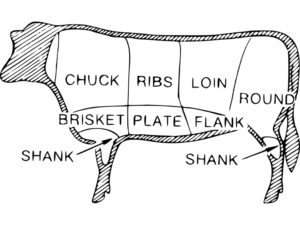
The divided large sections are called primal cuts, which you can find in the above beef cuts diagram. Knowing the features of each primal cut could help you easily understand the steak cuts.
In order not to overload the information in this article, here is a simple conclusion for these primal cuts. For a more detailed introduction, check this post.
(Click the name of steak and jump to the introduction)
| Primal Cuts | Features | Steak Cuts |
| Chuck | Rich Beef Flavor Tough Texture (some exceptions) | Chuck Eye Steak Denver Steak Flat Iron Teres Major |
| Rib | Wonderful Marbling Flavorful Tender | Ribeye Steak Tomahawk Ribeye Cap Steak Prime Rib |
| Loin | Tender Soft Low in Fat | Filet Mignon Strip Steak T-bone / Porterhouse Sirloin Steak Tri-tip |
| Brisket | Rich Beef Flavor Tough Texture | Brisket |
| Plate | Fairly Fatty Contains a lot of Cartilage | Hanger Steak Skirt Steak Short Ribs |
| Flank | Deep Beef Taste Lean | Flank Steak |
| Round | Lean Tough | Round Roast |
| Shank | Extremely Lean Toughest Part of Beef With Marrow-rich Bone | Shank |
Steak Cuts from the Chuck Primal
Flavorful and tender make a perfect steak. However, the cuts with a richer flavor are usually accompanied by a tougher texture, as the depth of taste comes from hard working muscle. Yet, butchers tried to find some comparatively tender cuts from the parts other than rib and loin.
And here they are, Chuck Eye Steak, Denver Steak, Flat Iron and Teres Major are the relative newcomers which are highly flavored but tender as well as cost-effective.
1. Chuck Eye Steak

What is a Chuck Eye Steak?
The Chuck Eye Steak is extracted from the shoulder of a steer or heifer. There are only 6 Chuck Eye Steaks in an entire 1,200 lb animal which makes it rare.
Although it’s from the chuck primal which the steaks are usually tough, the Chuck Eye Steak is relatively tender. This is because this steak is from the fifth rib of a cow while Ribeye steak is from the sixth to twelfth ribs. It shares some characteristics of a Ribeye with a lower price, and thus it’s also known as “poor man’s rib-eye”.
Chuck Eye Steak is rich in flavor due to the active use of the shoulder muscles. Combining the features of chuck and rib, it has an excellent balance of flavor and tenderness, yet it’s an economical choice. Or if you want to spend less money but enjoy the densely marbled Wagyu beef, pick Chuck Eye Wagyu Steak.
Features of Chuck Eye Steak
- Rich Beef Flavor
- Well Marbled
- Fairly Tender
- Cost-effective
How to Cook Chuck Eye Steak?
Above all, enhance the Chuck Eye Steak by rubbing with a pinch of salt and a small amount of oil. Grilling or searing it over high heat, just like the way you cook ribeye. To increase the tenderness like a ribeye, you may sous vide this cut before grilling or searing.
However, do not overcook it which will result in a dry and tough meat. The best doneness of a Chuck Eye Steak is rare to medium rare.
2. Denver Steak

What is a Denver Steak?
Denver Steak is the muscle of the cow’s shoulder under the Chuck Eye Steak. Very few butcher shops carry this cut because it requires a superb butchering skill. But it’s getting more and more popular among the beef lovers.
The Denver Steak is another exceptional cut from chuck primal which is fairly tender and juicy with a nice marbling. Plus, it has a full beef flavor because of the heavily used shoulder muscle.
Features of Denver Steak
- Full of Beef Flavor
- Quite Tender
- Juicy
- Fairly Marbled
How to Cook Denver Steak?
There are diverse ways of cooking for a Denver Steak. You can sous vide them for around 4 hours at 125°F (51.7°C) to get a more tender result. After that, let it rest for a while, then pat dry, simply season with salt and pepper. To finish, char over high heat for a superior surface.
Alternatively, searing in a hot cast iron skillet is a quicker but also delectable way. The best doneness of a Denver Steak is rare to medium rare.
3. Flat Iron

What is a Flat Iron?
Flat Iron is obtained from the chuck primal. It’s sourced from the top blade (or infraspinatus) muscle of the cow’s shoulder, so it’s also known as Top Blade Steak.
It’s not a common cut but every butcher does love it! Thanks to the promotions of some butcher shops and steakhouses, it is increasingly popular with the public.
As an outstanding steak cut from the chuck, meat scientists found that Flat Iron is the second most tender cut just after Filet Mignon due to its fine grain. This cut is also excellent in terms of marbling. It’s intensely and evenly marbled with a burst of beef juice resulting in a wonderful buttery mouthfeel and amazing flavor. What’s more, it only costs half of other more well-known cuts.
Features of Flat Iron
- Extremely Tender (second only to Filet Mignon)
- Nice Marbling
- Juicy
- Cost Less
How to Cook Flat Iron?
The Flat Iron cut is incredibly versatile, it tastes well from medium rare to well done. Yes, it’s well done. This is one of the cuts that can be served as well done without destroying its savor. However, the best doneness for the Flat Iron is medium rare to medium.
To prepare a Flat Iron, grilling or searing on a high heat with simple seasoning would be scrumptious.
4. Teres Major
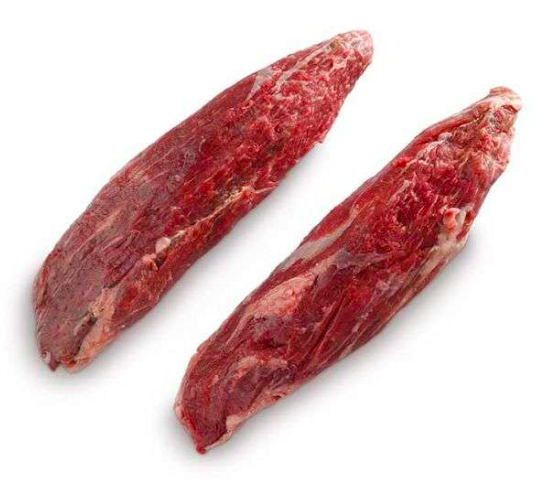
What is a Teres Major?
Teres Major is skillfully extracted from the chuck section of beef and its name actually is the name of the muscle. It has another name — petite tender, because it has almost the best tenderness, similar to Flat Iron. What’s more, the frequent use of muscles around this cut causes it to be flavorful.
There is only 2 lbs of Teres Major from every beef. To retrieve this small piece of meat, it requires a lot of work and an excellent butchering skill for the butchers. But it’s worth it!
► Read More: What Is Teres Major Steak & How to Cook? | 2nd Most Tender Cut
Features of Teres Major
- Extremely Tender(second only to Filet Mignon)
- Fairly Rich Flavor
How to Cook Teres Major?
There is not much work to cook this cut. First, season the Teres major with salt and pepper, then pat dry. Meanwhile, preheat the cast iron pan with some grape seed oil. Sear it over high heat for no more than 10 minutes. After that, take some time to rest the meat and enjoy it with your favorite drinks. The recommended doneness for this cut is rare to medium rare.
► Read More: 11 Secret Beef Cuts that True Beef Lovers Should Know!
Steak Cuts from the Rib Primal
The steaks from rib primal share the features of rich marbling and tender texture. They have been five-starred since the butchers discovered them.
Everyone, even the vegetarians, know their names as they are the classic cuts of steak. But the below introductions included a lesser-known yet fantastic cut.
Let me introduce the immortals of the finest steak cuts, Ribeye Steak, Tomahawk Steak, Ribeye Cap Steak, and Prime Rib.
5. Ribeye Steak
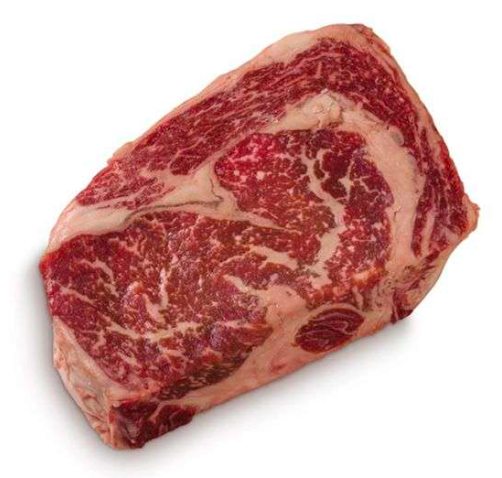
What is a Ribeye Steak?
Ribeye is one of the most famous cuts of steak. It comes from the rib primal which is the main source of premium steaks. They are soft and juicy since the muscles of this section do not move very frequently.
Certainly, The Ribeye cut is the best representative for the steaks from rib primal as it does possess all of the features. If you look at a Ribeye Steak, you will see an eye-like fat at the center and thus it’s named “Rib-eye”. The wonderful marbling and the fatty cap push it to a top ranking of the luxurious steaks. It is highly and evenly marbled, as a result produced an incredible combination of rich flavor, tender and smooth texture, and buttery essence.
It’s common to have two options when you are choosing Ribeye Steak, bone-in or boneless, which indicates whether the steak contains a rib bone or not. The bone could add the flavor and moisture but it may make cooking more difficult. The meat next to the bone will be rarer than the rest of the steak, yet it could be a bonus for you to enjoy.
Features of Ribeye Steak
- Wonderful Marbling
- Tender and Smooth
- Buttery
- Juicy
- Flavorful
How to Cook Ribeye Steak?
Cooking the Ribeye fast with high heat creates a fantastic result. That’s why preheating your grill or cast iron pan is an essential step. Then, all you need to do is just quickly grill or sear, remember to start on the fat which makes it even more mouth watering. If you prefer a medium rare steak, heat the internal to 130°F (54.4°C).
You just need a simple seasoning as the delightful marbling already gives you more than enough flavor. Don’t forget to let the steak rest for a few minutes before digging in!
6. Tomahawk Steak
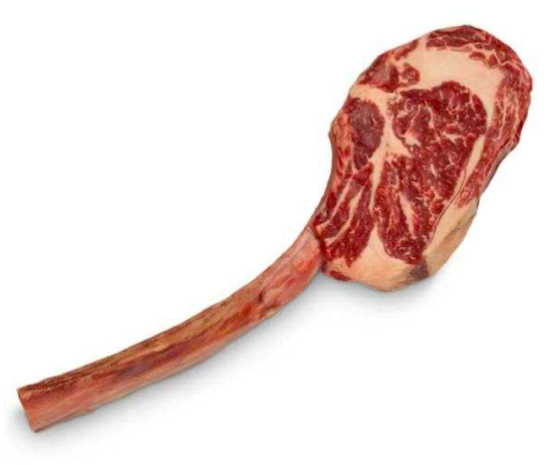
What is a Tomahawk Steak?
Tomahawk is actually a Bone-in Ribeye with a big, entire long rib bone. To accommodate the width of the rib bone, Tomahawk Steaks are usually 2 inches or thicker, while the weight is generally between 30 and 45 ounces (850 to 1275g). The word “Tomahawk” comes from American Indians which is the name of their fighting ax.
There are three major muscles in a full ribeye, such as Tomahawk, they are the large center eye (longissimus dorsi), the complexus muscle, and the cap of ribeye or deckle (spinalis dorsi). The complexus is a relatively small side muscle which is not always included depending on how the steak is cut while the cap could be a single delicious cut.
The muscles of Tomahawk are connected together by tender sinew with the filling of plentiful fat. The thick-cut meat with the beautiful marbling makes the Tomahawk to be one of the first-rate steaks. It tastes succulent and satisfying. Alternatively, you may try Cowboy Steak which is another thick ribeye with a shorter bone.
Features of Tomahawk Steak
- Thick-cut and Meaty
- High Level of Marbling
- Juicy
How to Cook Tomahawk Steak?
Reverse searing is the best way to cook a Tomahawk Steak. Put the steak into an oven, grill or smoker at an appropriate temperature, then add the final crust by searing on a hot skillet. This is an ideal method for the thick-cut steak as it can evenly cook the meat as well as keep the moisture.
7. Ribeye Cap Steak
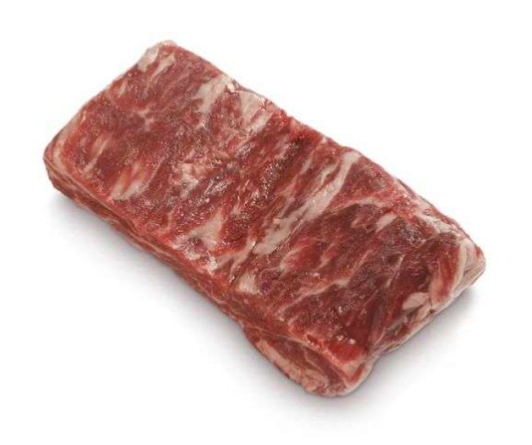
What is a Ribeye Cap Steak?
The Ribeye Cap Steak is the outer muscle of the ribeye roll which is the source of Ribeye Steak and Prime Rib. It has many names such as deckle steak, calotte or spinalis dorsi, but the most vivid one is “butcher’s butter”.
Not many people know this cut since it’s rare, limited and luxurious. Finding the cap of ribeye is not an easy job, yet it may be available in prestigious restaurants or butcher shops.
The Ribeye Cap is highly favored by top chefs and true beef connoisseurs. It’s even superior to a Ribeye Steak in terms of tenderness, juiciness, flavor, and marbling. It has a very tender texture that is close to a Filet Mignon, an amazingly delectable flavor, as well as a perfectly rich marbling. The gorgeous marbling is the wow-factor of this cut which will melt in your mouth as butter.
Features of Ribeye Cap Steak
- Perfectly Rich Marbling
- Buttery
- Very Tender
- Full of Juice
- Deep Flavor
How to Cook Ribeye Cap Steak?
Grilling and searing generate an extraordinary Ribeye Cap Steak. Likewise the ribeye steak, cooking quickly over high heat is the magic code. Cook to desired doneness and rest it for a couple minutes. Then, enjoy this luxurious cut and let it melt on your tongue!
8. Prime Rib
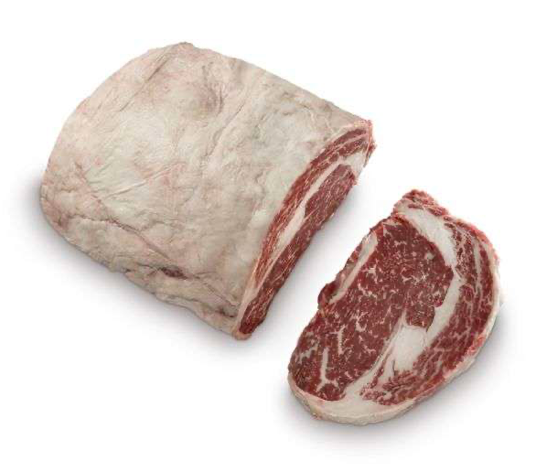
What is a Prime Rib?
Prime Rib is cut from the seven bone section of the rib primal. It’s also named as “Standing Rib Roast” because it’s often roasted in a “standing” position on the rib bones, and thus the meat does not touch the pan.
A Prime Rib cut mainly consists of three groups of muscles, they are the large center eye, the complexus muscle, and the cap of ribeye, which is the same with Ribeye Steak. Actually, a Prime Rib roast could be cut into pieces of Ribeye Steak, but they have some subtle differences. The Prime Rib possesses a slightly stronger flavor since it’s stacked with bones, fat and connective tissue as a larger cut of meat.
The beautiful marbling as well as the desirable cap and center eye create the best result in the mouth. This cut is heavenly marbled which helps maximizing its flavor and juiciness. Each bite is remarkable with its tender texture and rich beef flavor.
This large and premium cut is definitely the best choice for holiday and celebrations, and to share the joy with family and friends.
Features of Prime Rib
- Beautiful Marbling
- Strong Beef Flavor
- Tender
- Juicy
- Large Cut
How to Cook Prime Rib?
The Prime Rib is generally cooked at low temperature for a prolonged period of time, which is different from a Ribeye Steak. Roasting in an oven is a good choice. Don’t forget to cover the roast with aluminum foil and rest the meat before carving it! It helps the juices redistribute back into the meat.
Steak Cuts from the Loin Primal
The loin primal is another source of classic premium steaks other than the rib primal. It has two parts which are short loin and sirloin whereas sirloin is situated toward the round of beef.
Due to the more frequent use of muscle, the meat taken from this area tends to be leaner than that of rib primal. Yet, they still have an excellent mouthfeel, especially the Filet Mignon which is the most tender cut of beef.
Here comes the introduction of Filet Mignon, New York Strip Steak, T-Bone Steak / Porterhouse, Sirloin Steak and Tri-Tip.
9. Filet Mignon
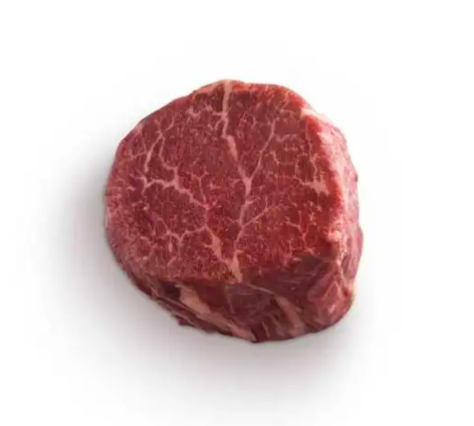
What is a Filet Mignon?
Filet Mignon is the most tender cut of beef which is very popular around the world. This cut is obtained from the muscle called Tenderloin so it’s also known as “Tenderloin Steak”. The fibers of this rarely exercised muscle are very fine so it tastes extremely tender and soft, which can be cut with a butter knife or a fork.
Filet Mignon is lean and does not have much marbling so it does not have the same stunning fat essence as Ribeye Steak. However, you can purchase a top graded Filet which has the super tender mouthfeel as well as a higher amount of marbling, then you can have your cake and eat it!
Filet Mignon appears in Porterhouse and T-Bone Steaks which is at the opposite of New York Strip Steak. There is only 4 to 6 lbs Filet Mignon of a cow, that’s why the price is comparatively high.
Features of Filet Mignon
- Extremely Tender (the most tender cut)
- Low in Fat / Lean
- Mild Beef Flavor
How to Cook Filet Mignon?
Owing to the lack of fat, searing it quickly over high heat is the best way to get a nice surface but keep it juicy inside. Do not overcook this precious tender cut, it will be tough and dry due to the low amount of fat.
The recommended doneness is medium rare with 130°F internal temperature. Remember to remove the Filet Mignon from heat when the thermometer registers 5-10°F lower than desired doneness to avoid overcooking. Let it rest for a while. Finally, enjoy it with a nice sauce. Bearnaise sauce will be a good match with Filet Mignon.
10. New York Strip Steak
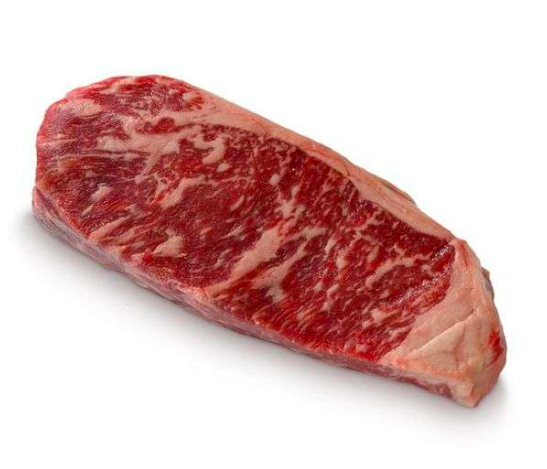
What is a New York Strip Steak?
New York Strip Steak is derived from the longissimus dorsi muscle which is a lengthy muscle that starts in the rib primal and extends to the round primal. The Strip Steak is a part of the muscles located in the loin primal. This part of muscle has a certain amount of movement, and so it has a tight texture.
It’s firm but tender due to the high level of intramuscular fat, which also creates a hearty beef flavor. The amount of marbling is between Ribeye Steak and Filet Mignon, and distributed evenly.
It’s been called “New York Strip” since the 1830s which was coined by Delmonico’s, a legendary Manhattan restaurant. Generally, the boneless strip steaks are called New York Strips while the bone-in steaks are known as Kansas City Strip Steaks.
Features of New York Strip Steak
- Firm and Tight / Chewy
- Tender
- Fairly Marbled (between Ribeye Steak and Filet Mignon)
- Hearty Beef Flavor
How to Cook New York Strip Steak?
Quickly grill or sear the New York Strip Steak on a high heat would have a fantastic result. Take some time to preheat the grill or cast iron pan. Remember to rest your meat which could retain the juices inside the meat, otherwise the juices will all be gone.
11. T-Bone Steak / Porterhouse
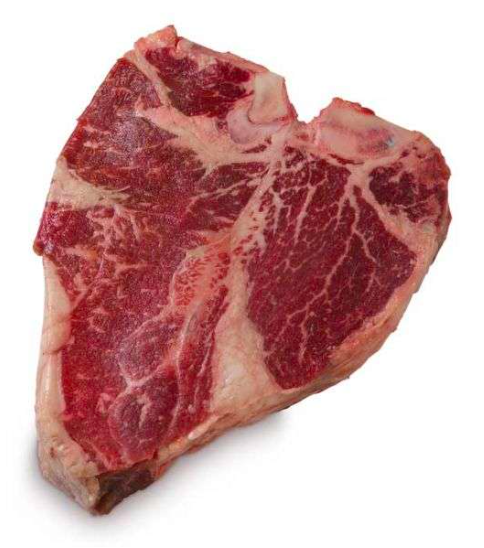
What is a T-Bone Steak / Porterhouse?
T-Bone Steak is part of short loin which is the front part of loin primal. There is a t-shaped bone that divides the steak into two parts, that’s why it’s called T-Bone Steak. The larger side is New York Strip Steak while the smaller side is Tenderloin, or Filet Mignon.
These two parts have different features, New York Strip Steak tends to be fairly marbled and chewy, whereas Tenderloin is lean but tender. The fans adore this two-for-one cut which allows them to enjoy the distinct feels at the same time, as well as a larger piece of steak since its size is pretty large.
Porterhouse is actually the same cut with T-Bone Steak, the only difference is the size of tenderloin. If the tenderloin is larger than 1.5 inches, it’s a Porterhouse. If it is with a smaller portion of tenderloin which is between 0.5 and 1.5 inches, it’s a T-Bone Steak.
Features of T-Bone Steak / Porterhouse
- T-shaped Bone
- Combination of Strip Steak and Tenderloin
- Strip Steak: Chewy and Marbled; Tenderloin: Tender and Lean
- Pretty Large
How to Cook T-Bone Steak / Porterhouse?
A T-Bone Steak is great to sear or grill over high heat, just like the ways of cooking Filet Mignons and New York Strip Steaks. Thaw and pat dry the steak completely before cooking.
My favorite doneness for a T-Bone Steak or Porterhouse is medium rare, you can taste the best mouthfeel at this gradation. Take the steak away from the heat when the thermometer registers the internal temperature 5-10°F lower than desired doneness. Then, rest the steak before cutting in order to let the heat evenly distribute inside the meat, hence keep the juice.
12. Sirloin Steak
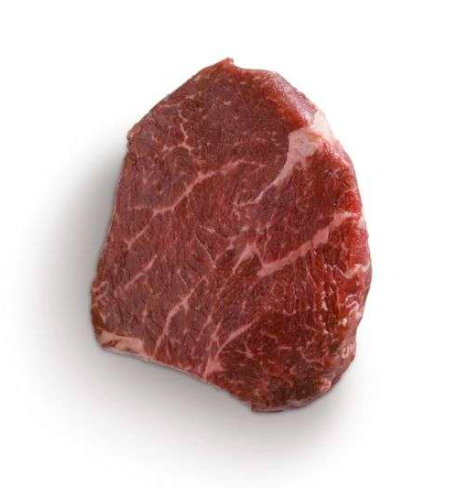
What is a Sirloin Steak?
The loin primal can be divided into two parts, short loin and sirloin, while sirloin is posterior to the short loin and located toward the backside of the cow. Sirloin Steak is sourced from the sirloin part which contains top and bottom sections. So there are actually different types of sirloin steaks according to their locations.
The Top Sirloin Steak is the most tender and finest cut so it’s most prized among all sirloin steaks. Typically, its name will be marked for sale specifically. The Bottom Sirloin Steak is less tender and leaner. It’s simply labeled for sale as “sirloin steak” in most cases.
Each sirloin has a low level of fat with moderate beef flavor which is quite similar to Filet Mignon, yet at a lower cost. But of course its tenderness is not as high as that of Filet Mignon.
Features of Sirloin Steak
- Fairly Tender
- Lean
- Moderate Beef Flavor
- Affordable
How to Cook Sirloin Steak?
Quickly grill or pan-sear the Sirloin Steak with a high heat until brown and charred. Then reduce heat to medium and cook to desired doneness. This is to keep it tender and juicy. It’s recommended to cook rare since it doesn’t have much fat, which the final internal temperature is 120°F. Medium rare would also be great to serve with a 130°F final internal temperature. If cooked too long, it will be tough and dry.
13. Tri-Tip
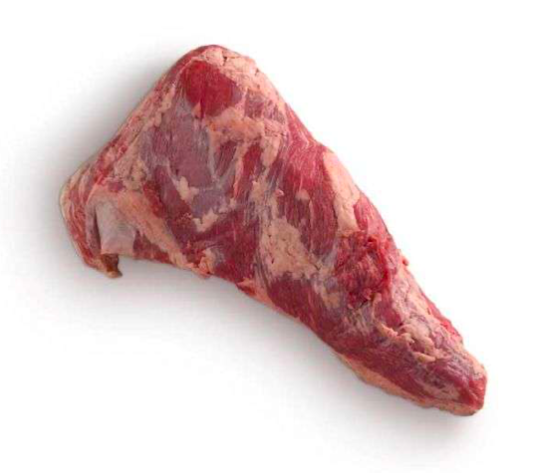
What is a Tri-Tip?
Tri-Tip comes from the bottom of the sirloin part which belongs to the loin primal. It’s a triangular tip that connects to the round and flank primal, which is the origin of its name.
This cut is quite chewy but is stacked with beef flavor and bursts with juice. It can be served as a roast or cut into steaks. A whole piece of Tri-Tip can serve 3-4 people. Remember to slice it against the grain to get the best result. The Tri-Tip is usually known as Newport Steak when it’s cut into steaks.
Apart from that, it has many different names especially when it moves to different countries. It’s named as “maminha” in Brazil while the French call it “aiguillette baronne”.
Features of Tri-Tip
- Stacked with Beef Flavor
- Chewy
- Juicy
- Quite A Large Piece of Meat
How to Cook Tri-Tip?
This cut works well on grilling particularly with hardwood. Season it with salt and pepper, then grill it to medium rare with a nice charred surface. Always let the mean rest for 10 minutes. Then, slice against the grain and enjoy! Chimichurri sauce will be a good match with Tri-Tip.
Steak Cuts from the Brisket Primal
14. Brisket
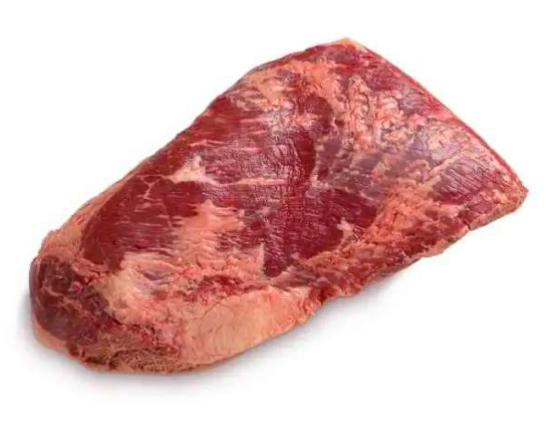
What is a Brisket?
Brisket, as the name implies, is the pectoral muscle that comes from the brisket primal. This muscle gets a lot of exercise and supports about 60% of the cattle body weight causing it to be tough but super flavorful. This is the reason why it is perfect for slow cooking methods such as crock pot cooking or smoking. These help break down the connective tissue and fat, hence get the best combination of deep beef flavor and a nice moist texture.
Features of Brisket
- Tough
- Super Rich Beef Flavor
- Large Cut of Meat
How to Cook Brisket?
Beef Briskets are wonderful for braising, smoking, boiling or any slow cooking methods.
Smoking is one of my favorite ways to prepare a Beef Brisket. Rub the Brisket with some nice seasonings, then slowly smoke over charcoal or other real wood. This would add some extra zesty flavor on the beef.
Steak Cuts from the Plate Primal
The plate primal is just beneath the rib primal and you could find ribs and diaphragm here. It has quite a large amount of fat especially around the ribs, and the diaphragm is what makes this part to be unique.
Hanger steak, Skirt Steak and Short Ribs are found in this primal.
15. Hanger Steak
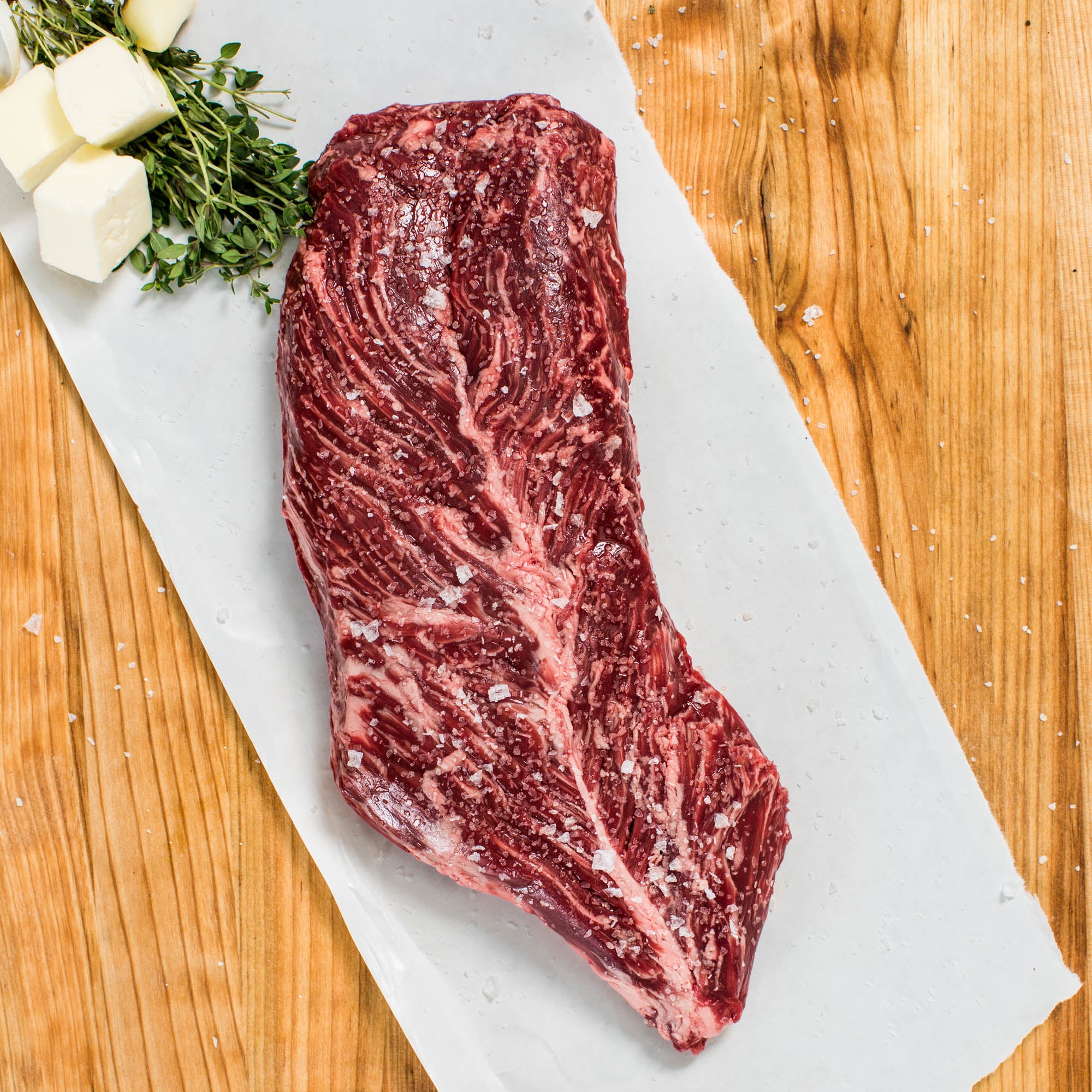
What is a Hanger Steak?
Hanger Steak is situated in the plate primal and sourced from the muscle that used to support the diaphragm of the cow. But it literally just hangs from the diaphragm which does no work, and that’s why it is very tender. There is only one Hanger per cow and it can be categorized as meat or offal.
It’s known as “butcher’s steak” in the past as butchers usually keep it for themselves instead of selling it on the market. Since this cut was generally considered as a crude cut of meat. But the fact is that Hanger Steak is packed with beef flavor and extremely tender with a beautiful grain.
A whole Hanger Steak is in V-shape which is divided by a long membrane in the middle while the membrane should be removed.
Features of Hanger Steak
- Very Tender
- Packed with Beef Flavor
How to Cook Hanger Steak?
Firstly, remove the middle membrane and separate the whole Hanger Steak into 2 long pieces. After that, sear on a cast iron pan over high heat with butter and your favorite herbs. Make sure to brown all sides of the steak to give an appetizing color. It’s best to serve medium rare.
► Read More: What Is Hanger Steak? Is It Tender? | vs Skirt & Flank Steaks
16. Skirt Steak
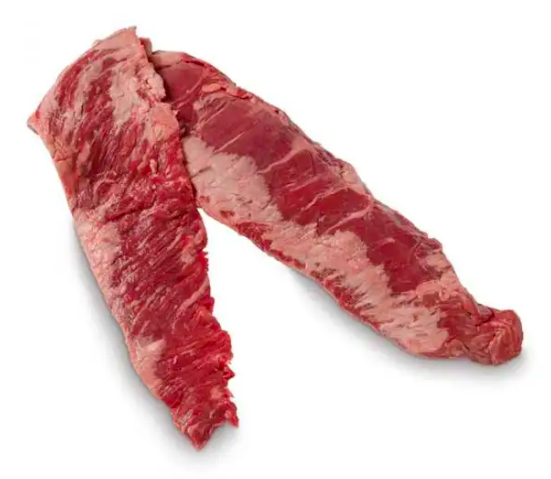
What is a Skirt Steak?
Skirt Steak is located in the plate primal and there are two types of skirt, inside and outside. The Inside Skirt is rather tough while the Outside Skirt Steak is more desirable. The Outside Skirt is comparatively tender which is actually the diaphragm of the cow. The diaphragm is to help the cow breath, which requires constant movement. Thus, it gets a workout that creates an unbelievably deep flavor and coarse muscle fibers.
The coarse fiber is the distinct feature of Skirt Steak which makes it a perfect cut for marinades. So it is the classic member of carne asada and fajitas. Tacos are also its good partners. For this long, thin piece of steak, it’s important to cut against the grain for the best tenderness.
Features of Skirt Steak
- Long and Thin
- Very Deep Flavor
- Coarse Grain (Good for Marinades)
- Very Lean
How to Cook Skirt Steak?
This cut only needs to be cooked for a couple of minutes due to its thinness. Marinate the Skirt Steak, then sear it on a cast iron pan over high heat for 2-4 minutes per side. Once again, remember to rest the steak and slice it against the grain. Enjoy with tacos!
17. Short Ribs

What are Short Ribs?
Short Ribs can be taken from the brisket, chuck, plate, or rib primal while plate short ribs tend to be fattier. There are two to five ribs in the plate rib section which combine the meat and fat memorably. The rib bone and the layers of fat enrich the flavor while the meat provides you the satisfied bites. You can also choose the Boneless Short Ribs to enjoy big bites of meat solely.
Short ribs are popular in different styles of cooking, especially in Korean cuisine. It’s suitable for braising, sous vide and barbecuing. “Galbi” is a scrumptious dish from Korea which typically uses beef short ribs. The Short Ribs are usually marinated and served raw, then grilled by the diners themselves.
Features of Short Ribs
- With Rib Bone
- Perfect Combination of Meat and Fat
How to Cook Short Ribs?
Barbecue Short Ribs in Korean style is a good choice. However, you can also try braising them in bone broth. The long cooking process helps break down the connective tissue and yields the best mouthfeel. For example, braise the Short Ribs in broth with simple seasonings at 180°F for several hours. Lastly, add some fresh herbs to bring out the flavors.
Steak Cuts from the Flank Primal
18. Flank Steak

What is a Flank Steak?
The Flank Steak, obviously, is cut from the flank primal which is located just below the loin primal. This cut is popular in Latin America. It is a single muscle from the belly of the cattle, which is frequently used. Therefore, the Flank Steak has a great amount of connective tissue but also a concentrated beef flavor.
Using some fruit marinades, such as pineapple, as tenderizers helps break down the connective tissue and adds a nice flavor. Try this to prepare a Flank Steak.
It is easy to slice and serve because of its broad shape. For the best outcome, make sure you cut against the coarse grain.
Features of Flank Steak
- Very Lean
- Fairly Tough
- Concentrated Beef Flavor
How to Cook Flank Steak?
Although the Flank Steak is lean, searing is a good way to prepare this cut. This is a fast and easy dish to serve. Simply sear it with your favorite marinade, fruit marinade is a good choice which can tenderize the meat as well.
Make sure you clean all the marinade off before putting it into the skillet to prevent burning. Don’t forget to rest the steak for a couple minutes before carving. And do remember to cut AGAINST the grain, which is the key for the best mouthfeel.
Steak Cuts from the Round Primal
19. Round
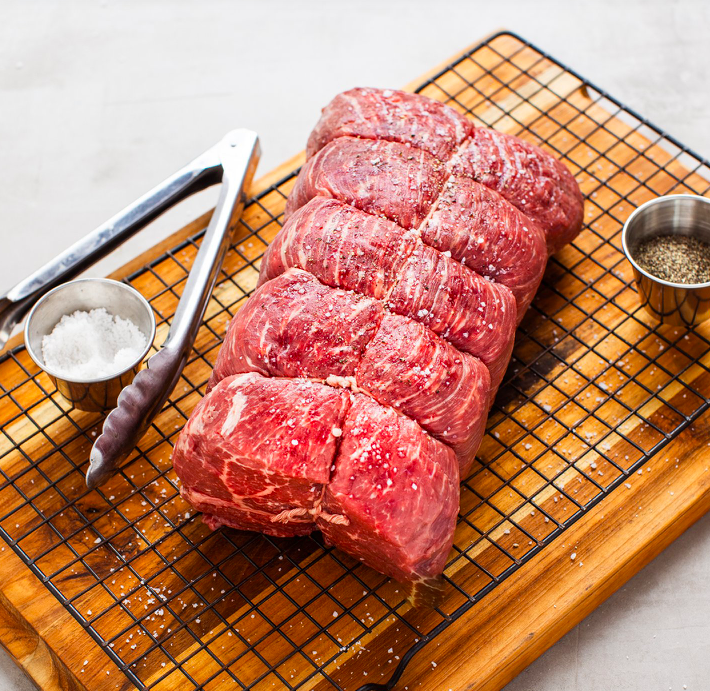
What is a Round Roast?
Round is a cut of meat taken from the cow’s back leg. It is the part with hard-working muscle. Thus, this cut is extremely lean and usually a bit tough without much marbling and fat. However, it’s rich in beef flavor due to the same reason.
There are two different rounds according to the positions. Top Round is relatively tender and enough to cook as steaks, yet the price is higher than that of Bottom Round. While Bottom Round is an economical and easy-to-cook choice. Due to the low fat content and tough texture, it isn’t good for steaks but splendid for slow cooking.
Features of Round
- Low Fat Content
- Tough
- Economical
How to Cook Round?
Round is perfect for oven roasting which is handy and delicious. Most of the Round Roast is tied and ready to roast for sale, do not cut off the twine.
Season the meat and preheat the oven to 500°F. Roast it for 10 minutes and then drop the oven temperature to 225°F. Continue to cook it until the internal temperature reaches 120°F for medium rare. Finally, rest the meat and slice it as thin as you can to maximize the mouthfeel.
The best doneness for Round Roast is rare to medium rare.
► Read More: 8 Leanest Steak Cuts / Healthiest Steak Cuts Best Fit For Weight Loss
Beef Cuts from the Shank Primal
20. Shank

What is a Shank?
The Beef Shank is the toughest part of beef and extremely lean due to the heavy workload of the muscle. There is a marrow-rich bone at the center which adds an extra flavor to the dish after a long process of softening.
With the right treatment, the beef shank could exert its strength well. Braising would give the finest result, Beef Bourguignon and Osso Buco are the best examples of it. And because it is very lean, it’s commonly used to prepare low-fat ground beef. Other than this, beef shank can enrich soups as well.
Features of Shank
- Very Tough
- Extremely Lean
- With Marrow-rich Bone
How to Cook Shank?
Braising is certainly the best choice. For instance, braise the Shank with bone broth and some fresh herbs. Cook it for several hours at 180°F which allows the connective tissue to break down and bring out the flavor. Alternatively, try to cook it as Beef Bourguignon or Osso Buco!
► Read More: 20 Pork Cuts Must to Learn (American Cutting Diagram)
► Read More: 14 Lamb Cuts To Know Before Dining Out! | Chart & Guide
A Quick Summary of All Steak Cuts
| Steak Cuts | Features |
| Chuck Eye Steak | Rich Beef Flavor Well Marbled Fairly Tender Cost-effective |
| Denver Steak | Full of Beef Flavor Quite Tender Juicy Fairly Marbled |
| Flat Iron | Extremely Tender (second only to Filet Mignon) Nice Marbling Juicy Cost Less |
| Teres Major | Extremely Tender (second only to Filet Mignon) Fairly Rich Flavor |
| Ribeye Steak | Wonderful Marbling Tender and Smooth Buttery Juicy Flavorful |
| Tomahawk Steak | Thick-cut and Meaty High Level of Marbling Juicy |
| Ribeye Cap Steak | Perfectly Rich Marbling Buttery Very Tender Full of Juice Deep Flavor |
| Prime Rib | Beautiful Marbling Strong Beef Flavor Tender Juicy Large Cut |
| Filet Mignon | Extremely Tender (the most tender cut) Low in Fat / Lean Mild Beef Flavor |
| New York Strip Steak | Firm and Tight / Chewy Tender Fairly Marbled (between Ribeye Steak and Filet Mignon) Hearty Beef Flavor |
| T-Bone / Porterhouse | T-shaped Bone Combination of Strip Steak and Tenderloin Strip Steak: Chewy and Marbled; Tenderloin: Tender and Lean Pretty Large |
| Sirloin Steak | Fairly Tender Lean Moderate Beef Flavor Affordable |
| Tri-Tip | Stacked with Beef Flavor Chewy Juicy Quite A Large Piece of Meat |
| Brisket | Tough Super Rich Beef Flavor Large Cut of Meat |
| Hanger Steak | Very Tender Packed with Beef Flavor |
| Skirt Steak | Long and Thin Very Deep Flavor Coarse Grain Good for Marinades Very Lean |
| Short Ribs | With Rib Bone Perfect Combination of Meat and Fat |
| Flank Steak | Very Lean Fairly Tough Concentrated Beef Flavor |
| Round | Low Fat Content Tough Economical |
| Shank | Very Tough Extremely Lean With Marrow-rich Bone |
Summary
Whew! Finally you finished this thick steak cuts textbook, which is only a tiny portion of steak knowledge. But you are able to pick the best steak cuts for yourself now! Check the features of the cut and make sure it is what you are looking for. And do try once for each cut, you will find the diverse enjoyment of beef!
► Read More: Grass Fed Beef vs Grain Fed Beef
► Read More: 6 Beef Grading Systems In the World (with Complete Chart)


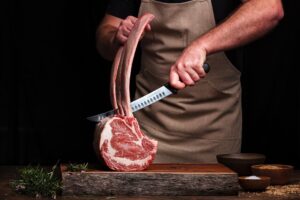
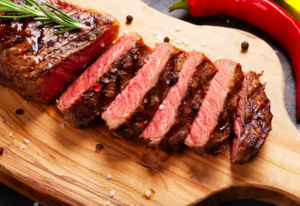

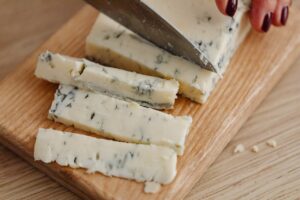
Very useful, thanks!